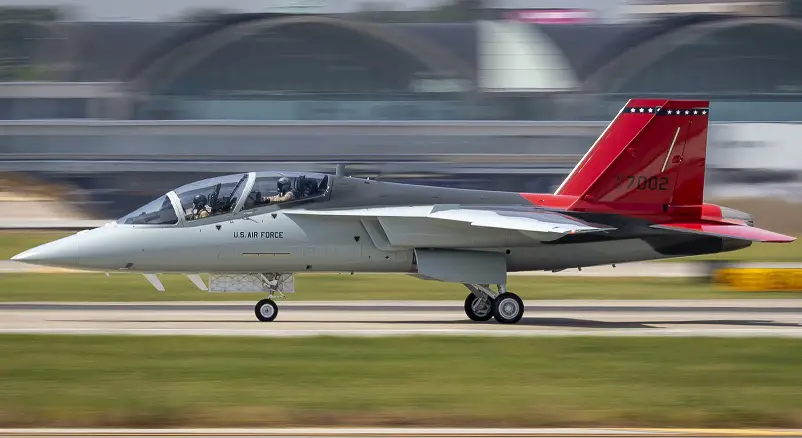The Boeing T-7 Red Hawk supersonic advanced jet trainer has successfully completed taxi tests, a critical step in verifying the ground-handling capabilities and systems of the advanced trainer for the U.S. Air Force. The aircraft is one of five engineering and manufacturing development aircraft that will be used for flight testing this summer in St. Louis and will then transition to Edwards Air Force Base for testing in the fall. Since contract award, Boeing has flown two production representative jets up to six sorties a day recording more than 7,000 data and test points validating the platform’s reliability.
“The flight controls and commands to the fly-by-wire system were crisp and the aircraft maneuvered exceptionally well. Everything operated as designed and expected,” said Steve Schmidt, Boeing’s T-7A Red Hawk chief test pilot.
“Our priorities are developing this advanced trainer and getting it to future fighter and bomber pilots. This test brings us one step closer to the T-7A Red Hawk taking to the skies,” said Evelyn Moore, vice president and T-7A Red Hawk program manager.

The Boeing–Saab T-7 Red Hawk, initially known as the Boeing T-X (later Boeing–Saab T-X), is an American/Swedish supersonic advanced jet trainer produced by Boeing with Saab. On 27 September 2018, the U.S. Air Force (USAF) picked it for the T-X program to replace the Northrop T-38 Talon as the service’s advanced jet trainer. The T-7’s design allows for future missions to be added, such as the aggressor and light attack/fighter roles. In the training environment, it has been specifically designed for high-G and high angle-of-attack maneuvers and night operations, with an emphasis on being easily maintained.
The Boeing T-7 Red Hawk has a length of 46 ft 11 in (14.30 m), a wingspan of 30 ft 7 in (9.32 m), and a height of 13 ft 6 in (4.11 m). With a maximum takeoff weight of 12,125 lb (5,500 kg), the T-7 Red Hawk is relatively lightweight, allowing for agile flight characteristics. The aircraft is equipped with a single General Electric F404-GE-103 afterburning turbofan engine, generating 11,000 lbf (49 kN) of thrust in a dry configuration, and 17,200 lbf (77 kN) with afterburner. The Boeing T-7 Red Hawk boasts impressive speed capabilities. It has a maximum speed of 702 knots (808 mph, 1,300 km/h) or Mach 1.05, allowing trainee pilots to experience high-speed flight.
















